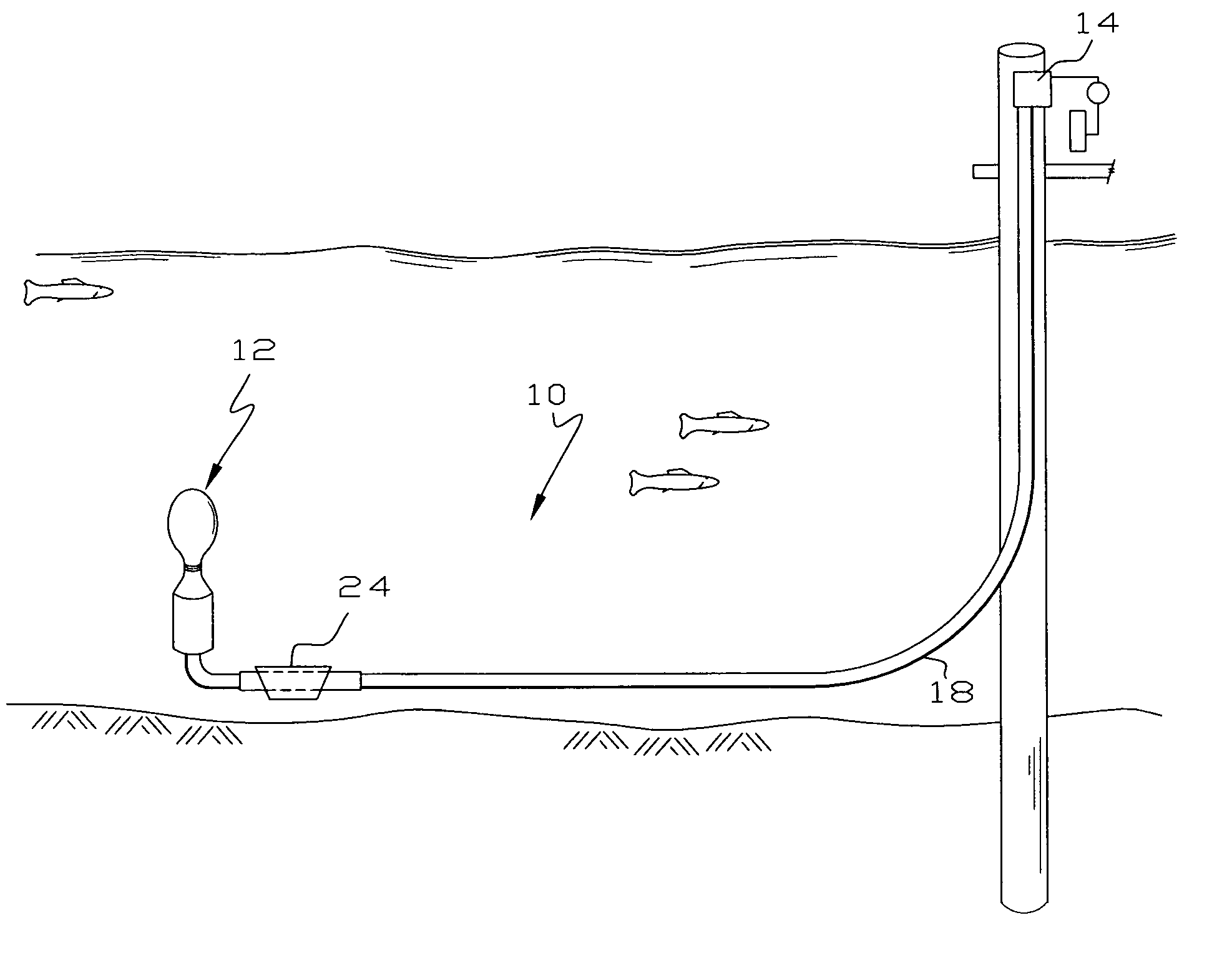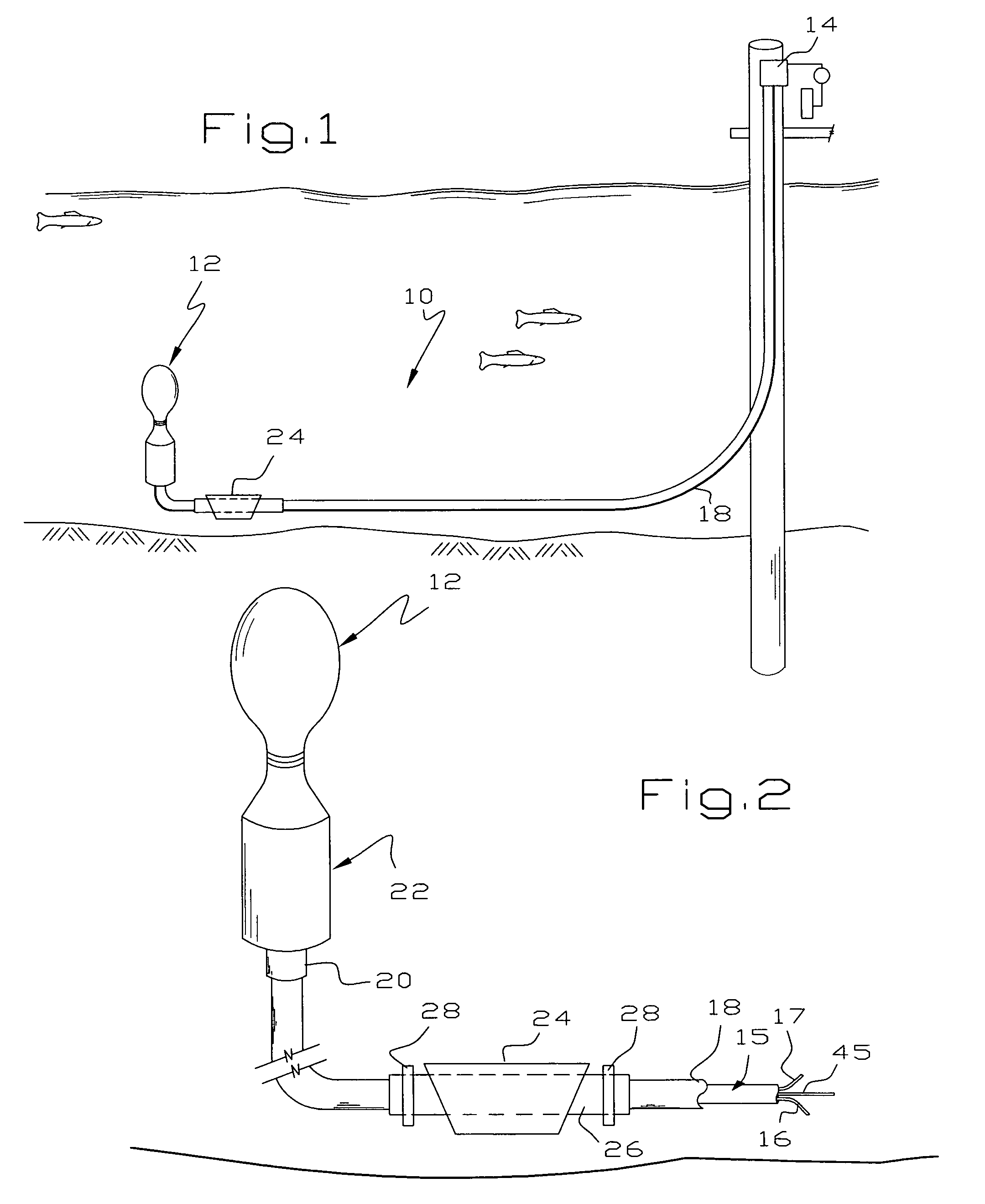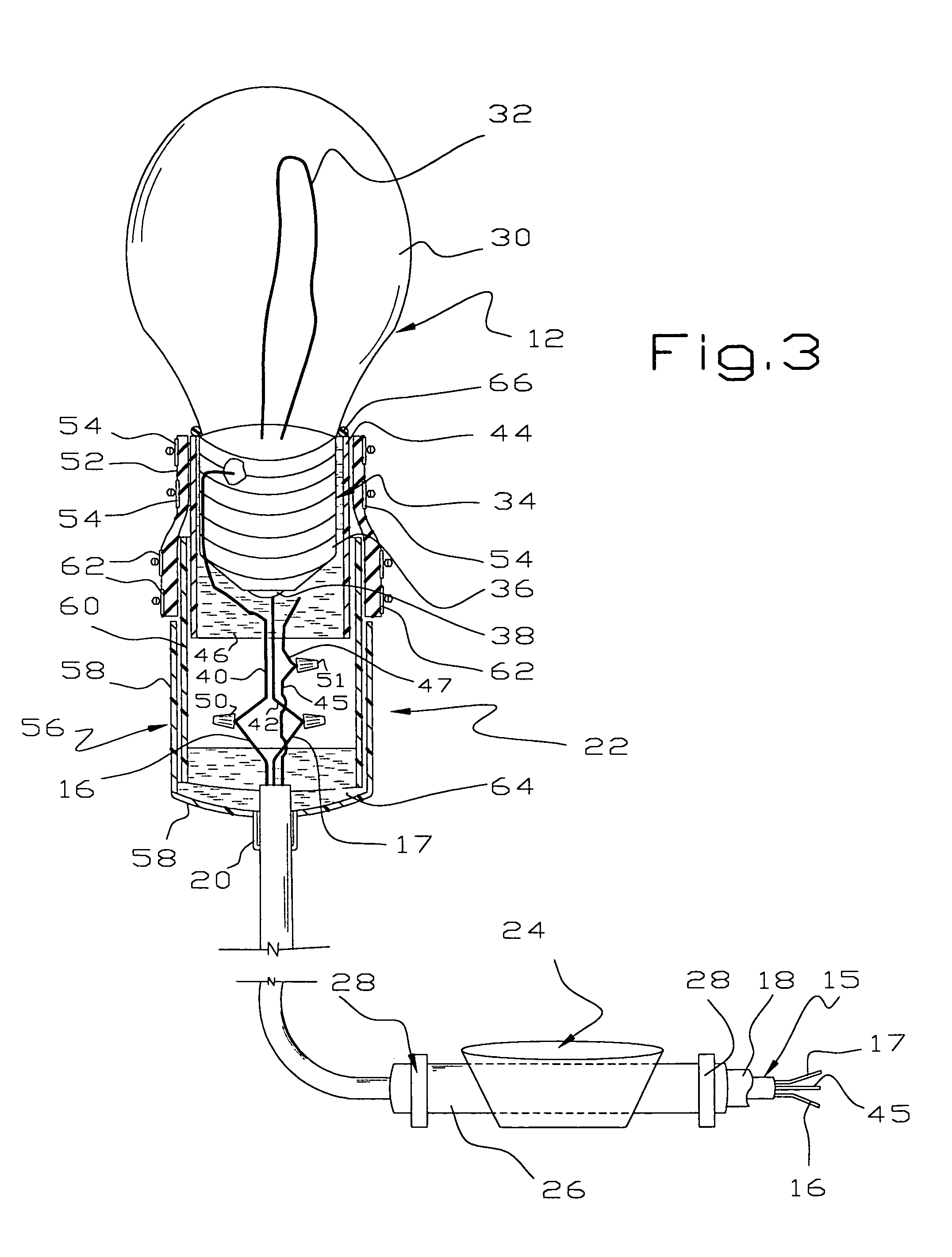Underwater light
a technology of underwater lights and wire coupling, which is applied in the direction of coupling device connections, lighting and heating apparatus, lighting applications, etc., can solve the problems of difficult and expensive replacement of bulbs, installation and maintenance of prior art underwater lights, etc., and achieves simple yet effective coupling methods. simple and convenient installation, the effect of reducing the cost of replacemen
- Summary
- Abstract
- Description
- Claims
- Application Information
AI Technical Summary
Benefits of technology
Problems solved by technology
Method used
Image
Examples
Embodiment Construction
[0011]Referring to FIGS. 1–3, the underwater light 10 of this invention comprises a lamp 12 electrically coupled to a transformer 14 by a pair of suitable insulated wires 16, 17 being part of an insulated three wire assembly 15 received in and protected by a flexible conduit 18. Currently the preferred lamp 12 is a mercury vapor lamp, although any high intensity lamp may be used. Mercury vapor lamps have been used successfully by numerous builders of underwater lighting systems since the early to mid 1990's. The transformer 14 is controlled by a photoelectric eye (not shown) that automatically turns the light on at night and off at daybreak. The transformer 14 is coupled to an electrical source on shore using a ground fault circuit interrupter to meet electrical code requirements.
[0012]FIG. 2 shows a high profile model used when water depth is greater than 7 feet. The flexible conduit 18 is coupled directly to a PVC nipple 20 of a lamp enclosure 22. Lamps have been successfully plac...
PUM
 Login to View More
Login to View More Abstract
Description
Claims
Application Information
 Login to View More
Login to View More - R&D
- Intellectual Property
- Life Sciences
- Materials
- Tech Scout
- Unparalleled Data Quality
- Higher Quality Content
- 60% Fewer Hallucinations
Browse by: Latest US Patents, China's latest patents, Technical Efficacy Thesaurus, Application Domain, Technology Topic, Popular Technical Reports.
© 2025 PatSnap. All rights reserved.Legal|Privacy policy|Modern Slavery Act Transparency Statement|Sitemap|About US| Contact US: help@patsnap.com



